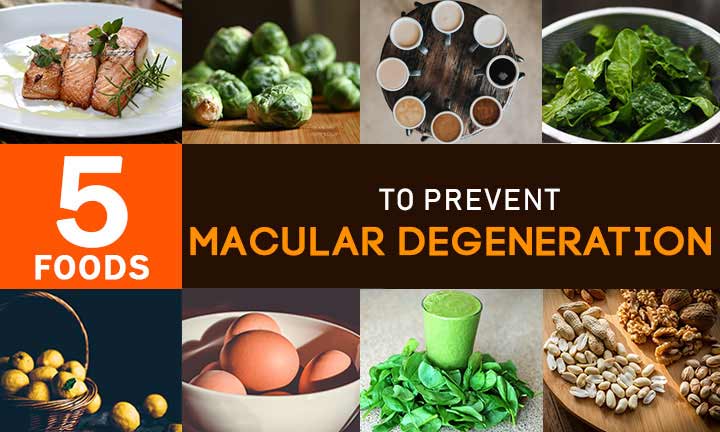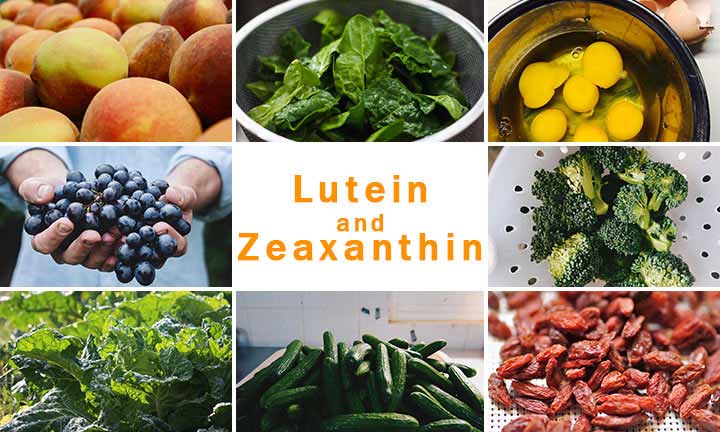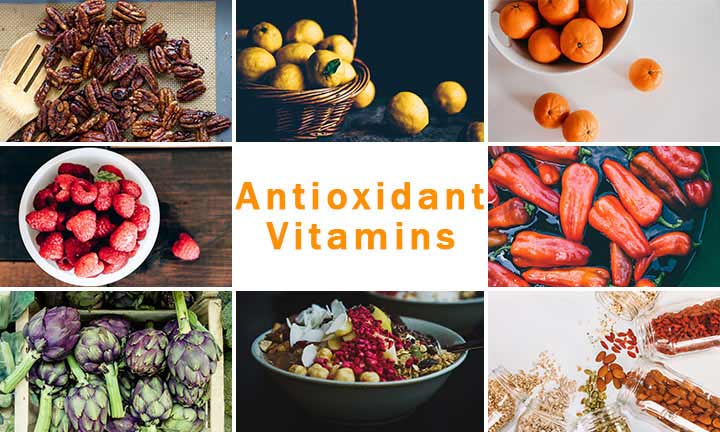6th, March 2019 | Oh Jinna
5 Foods to Prevent Macular Degeneration

What is Macular Degeneration?
Before we talk about the best foods to prevent macular degeneration, let’s first find out what this condition is all about.
Macular degeneration, also known as age-related macular degeneration (AMD), is a condition that decreases a person’s vision. AMD is also believed to be a leading cause of vision loss.
A study about macular degeneration by the Department of Ophthalmology, Victoria Hospital, Blackpool, United Kingdom shows that AMD is a prevalent cause of blindness in Australia.
Their results showed a 0% to 18.5% rise in AMD among people between the age of 55 to 85 years old.
While, an estimate of 72,220 Australians could have symptoms of late AMD in their eyes.
With the results of the study and the fact that everyone gets old over time, you could be little worried about AMD in the future, right?
Well, don’t worry. Our list of top foods to prevent macular degeneration will surely help you in the future.
How does macular degeneration or AMD occur?
AMD happens when the macula of your retina starts to deteriorate. Your retina is a tissue behind your eyes that helps you sense light. So when it deteriorates, you also start to lose your eyesight.
The effects of macular degeneration do not happen overnight and tends to gradually develop over time.
So when you have macular degeneration, your vision loss progresses as you get older.
This is the reason why macular degeneration is also known as age-related macular degeneration (AMD).
Even though AMD is doesn’t always lead to total blindness, it can still cause severe visual disabilities for people.
So, if you’re worried about AMD in the future, just keep reading and learn about the top foods to prevent macular degeneration.
2 types of AMD
There are basically two types of AMD that you should be aware of. These are the following:
- Dry form – The dry type of AMD is happens when yellow particles, also known as drusen, start to form in your macula. A little bit of drusen won’t cause any significant effect on your vision.
But when the size and amount of drusen increases, your vision will also start to get worse.
When you have dry AMD, you may notice distortions or dimness in your vision when you read.
As it progresses, the light-sensitive layer in your eyes can get thinner, which leads to atrophy to your cells and dead tissue.
When this happens, you may develop blind spots in the central part of your vision.
And in severe cases of dry AMD, you may lose your entire central vision.
- Wet Form – The wet type of AMD occurs when blood and fluid from your blood vessels flow into your retina. This causes you to perceive straight lines as bent or wavy lines.
You may also develop blind spots in your eyesight and lose your central vision.
The wet form of AMD happens when irregular blood vessels start to grow from the choroid beneath your macula.
The bleeding caused by the irregular blood vessels create scars that lead to vision loss.
Dry form of macular degeneration is more common with patients who have AMD. Although, the dry form of AMD can also progress to the wet form in some cases.
Not a lot of people have the wet form of AMD, but those who do have more severe vision loss and complications.
Top 5 foods to prevent macular degeneration
You can greatly reduces the chances of developing AMD as long as you stick to a healthy type of diet.
Angel Planells, MS, RDN, from the Academy of Nutrition and Dietetics, says that nutrition plays a very strong part of the longevity of your eyesight.
So, if you want to keep a healthy vision until your twilight years, be sure to bulk up on the following top 5 foods to prevent macular degeneration.
1. Omega-3 Fatty Acids

I’m sure you’ve heard this type of fatty acids before, mainly because it’s a common nutrient that’s easily available.
Experts consider Omega-3 fatty acids as a very important key to keeping the photoreceptor cells of you retina healthy.
You can get omega-3 from fishes such as sardines and salmons. Eggs, Spinach, yogurt, brussels sprouts, and walnuts are also known to be full of omega-3 fatty acids.
2. Lutein and Zeaxanthin

The macular section of your retina has plenty of carotenoids, mainly lutein and zeaxanthin.
According to the American Optometric Association, these carotenoids are used by your eyes to filter out dangerous blue wavelengths of light.
Sadly, we don’t naturally produce lutein and zeaxanthin so it’s best for you to add these nutrients to your diet.
You can get lutein and zeaxanthin from collard, egg yolks, spinach, and kale.
You should also take note that your body needs fat to absorb these nutrients so olive oil would be a plus.
3. Antioxidant vitamins

As we get older, the stress in our lives gradually pile up and cause eye problems.
Antioxidant vitamins like E and C help stop the build up of harmful oxidant chemicals in your eyes.
The National Eye Institute conducted a study which concluded that antioxidant vitamins, like vitamin C and E, and zinc reduce the risk of of vision loss caused by AMD.
The results showed that people who were likely to develop severe AMD reduced that risk by approximately 25 percent because of vitamin C, vitamin E, zinc, and beta-carotene.
You can easily get vitamin C from citrus fruits, like lemons and oranges, broccoli, and peppers.
And, you should be able to get enough vitamin E from spinach, peanuts, seeds, and cereals.
Juicing different types of fruits and vegetables is also a very good way to get antioxidant vitamins.
4. Zinc

Do you know that zinc is a type of mineral that aids in delivering vitamin A to your retina.
This is particularly important because your retina needs vitamin A to produce melanin which protect your eyes.
You can minimize the risk of AMD if you get a good amount of zinc and antioxidants in your diet. Here are some of the best sources of zinc for your eyes.
Some of the common foods that you can get zinc from are beans, red meat, whole grains, dairy products, beans, and oysters.
You can also take zinc and copper supplements that you can buy from generic pharmacies.
5. Coffee

If you’re a coffee lover, you’re in luck! Aside from it’s fragrant aroma and it’s energy kick, the caffeine in your cup of joe is actually good at preventing AMD.
According to a study by the Association for Innovation and Biomedical Research on Light and Image, beverages with caffeine can actually help protect people from AMD.
However, you should take not that the study also found that a diet full of fruits, legumes, fish, whole grains, and vegetables mainly reduce the risk of AMD.
Additionally, Joao Figueira, MD, from the Department of Ophthalmology at the University of Coimbra in Portugal, believes that the antioxidants in caffeine can fight against AMD.
This is because people who drank at least one espresso a day were not as affected by AMD.
Now you can rest easy and prepare yourself for are healthier future. Just make sure you don’t forget our list of top foods to prevent macular degeneration.
References:
Age-related macular degeneration: a leading cause of blindness.
https://www.ncbi.nlm.nih.gov/pubmed/8941243
Mediterranean Diet May Cut AMD Risk by More Than a Third
Antioxidant Vitamins and Zinc Reduce Risk of Vision Loss from Age-Related Macular Degeneration
https://nei.nih.gov/news/pressreleases/101201
Facts About Age-Related Macular Degeneration
https://nei.nih.gov/health/maculardegen/armd_facts
Age-Related Macular Degeneration Overview
https://www.webmd.com/eye-health/macular-degeneration/age-related-macular-degeneration-overview#1

Leave a Reply
You must be logged in to post a comment.